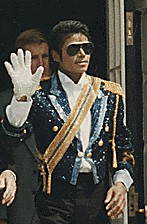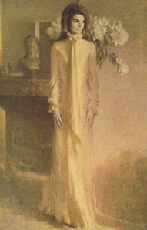Cosmetic surgery: Difference between revisions
imported>Michael Benjamin (→Lips) |
imported>Michael Benjamin (→Noses) |
||
| Line 45: | Line 45: | ||
==Noses== | ==Noses== | ||
==="Correction" of the ethnic nose=== | ==="Correction" of the ethnic nose=== | ||
In the 19th and in part of the 20th century, a Northern European Caucasian nose of certain proportions was the one and only aesthetic ideal in the western world. In the earlier portion of that period, outright discussion of the unattractiveness of semetic and negro noses was printed in both lay and professional publications. In the later portion of the 20th Century, wide and hooked noses were no longer so overtly labelled as a detrimental mark of ethnic origin, but still, such features were routinely described as showing "deformities". Patients sought corrections of these attributes that surgeons were willing to provide. | In the 19th and in part of the 20th century, a Northern European Caucasian nose of certain proportions was the one and only aesthetic ideal in the western world{{fact]]. In the earlier portion of that period, outright discussion of the unattractiveness of semetic and negro noses was printed in both lay and professional publications{{fact}}. In the later portion of the 20th Century, wide and hooked noses were no longer so overtly labelled as a detrimental mark of ethnic origin{{fact}}, but still, such features were routinely described as showing "deformities". Patients sought corrections of these attributes that surgeons were willing to provide{{fact}}. | ||
"A 1996 manual describing procedures for altering ethnic noses, for example, indicates that correction of the "Jewish nose" requires "a classic rhinoplasty with lowering of the dorsum, narrowing of the bony pyramid, refinement and elevation of the excessively long hanging tip. Another recent manual, while refraining from explicitly using the Jewish nose as a diagnostic category, notes that 2 patients with noses that "have acute nasolabial angles, plunging tips, or foreshortened nasal tip pyramids" were "of Jewish ancestry" or of "Jewish descent." | "A 1996 manual {{fact}} describing procedures for altering ethnic noses, for example, indicates that correction of the "Jewish nose" requires "a classic rhinoplasty with lowering of the dorsum, narrowing of the bony pyramid, refinement and elevation of the excessively long hanging tip. Another recent manual, while refraining from explicitly using the Jewish nose as a diagnostic category, notes that 2 patients with noses that "have acute nasolabial angles, plunging tips, or foreshortened nasal tip pyramids" were "of Jewish ancestry" or of "Jewish descent." <ref>{{cite journal |author=Preminger B |title=msJAMA: The "Jewish nose" and plastic surgery: origins and implications |journal=JAMA |volume=286 |issue=17 |pages=2161 |year=2001 |pmid=11694162}}</ref> | ||
The recognition of beauty can change over time, as ethnic characteristics that were once seen as "ugly" because they were a mark of a difference that was held undesireable by the general society become appreciated as intolerance dissipates. For example, the actress Jennifer Grey experienced a ''set-back'' in her career when she had a cosmetic rhinoplasty that changed her distinctive natural nose (with a delicate downward hook) into a more generic nose with a diminuitive button tip. | The recognition of beauty can change over time, as ethnic characteristics that were once seen as "ugly" because they were a mark of a difference that was held undesireable by the general society become appreciated as intolerance dissipates{{fact}}. For example, the actress Jennifer Grey experienced a ''set-back'' in her career {{fact}} when she had a cosmetic rhinoplasty that changed her distinctive natural nose (with a delicate downward hook) into a more generic nose with a diminuitive button tip{{fact}}. | ||
=== | ===Surgical techniques=== | ||
[[Image:Michael Jackson 1984.jpg|left|150px]] | [[Image:Michael Jackson 1984.jpg|left|150px]] | ||
====Weir incisions==== | |||
==Jaw lines== | ==Jaw lines== | ||
Revision as of 14:58, 25 February 2007
Cosmetic Surgery (Aesthetic Surgery) is the field of surgery in which operations serve to improve appearance rather than to cure disease. [1] Plastic Surgery is a superset of Cosmetic surgery, and encompasses both cosmetic surgery and reconstructive surgery. Reconstructive Surgery often aims to improve or restore function, and may not focus on appearance at all, while Cosmetic Surgery augments appearance according to cultural standards of perfection.
Although cosmetic surgery has historically been a traditional branch of Plastic Surgery, in most countries of the world, any physician licensed to practice any sort of surgery can legally perform cosmetic procedures. Physicians disagree as to the minimum standards of training and experience required to safely and effectively perform these procedures. Techniques and the people who perform them are rapidly evolving as of 2007.
Benefits and risks of cosmetic surgery
The risks of cosmetic surgery include those of any surgical procedure, such as
- Idiosyncratic reactions to anesthetic medications
- Thromboembolic disease such as pulmonary embolus or deep venous thrombosis
- Postoperative wound infections
- Excessive intraoperative or postoperative bleeding
- Cardiovascular disease, such as heart attack or stroke
- Endotracheal tube complications, such as laryngeal damage, or trauma to the hypopharynx
The risks specific to cosmetic surgery include, but are not limited to,
- Soft tissue graft failure
- Bone Osteonecrosis
Many of the risks of cosmetic surgery are specific to the actual procedure. Patients undergo a counseling session to understand the risks and benefits of the procedure, and the treating healthcare worker must obtain informed consent before proceeding.
The benefits of cosmetic surgery may include
- Enhanced self-image and self-esteem
- Improved occupational opportunities, as in entertainment industry workers
The ethical surgeon will employ techniques of Shared Decisionmaking, which includes undertaking a frank discussion of the risks and benefits of cosmetic surgery with the patient, and then helping the patient to make a decision that serves the patient's best interests.
Psychology of cosmetic surgery
Human beauty : universal attributes
Symmetry
Cultural & ethnic considerations
Lips
In the 21st Century very full lips are considered to be so attractive that procedures to "fill out" the lips are among the most popular procedures requested of aesthetic surgeons. Not only are varous fillers injected into the lips, but traditional "cold knife' plastic surgery is used to give more lasting results than the fillers can currently provide. Mutaf M (2006). "V-Y in V-Y procedure: new technique for augmentation and protrusion of the upper lip". Ann Plast Surg 56 (6): 605-8. PMID 16721070. . All of these procedures are generally safe and effective in expert hands, but, interestingly,there was little demand for lip augmentation a generation ago. That's because the fashionable face was different then.Template:Fact
Whereas the actress Angelina Jolie (pictured left) is thought by manyTemplate:Fact to have nearly perfect feminine lips in 2007, the actress Grace Kelly was much closer to that ideal in 1967, at the time the picture to the right was taken. Both women are generally considered to be great beauties, yet each of them, as pictured in these photographs, might also be considered legitimate candidates for cosmetic surgeryTemplate:Fact.
In the 1960s, what are now considered beautifully full lips were then viewed as excessively thick lips.Template:Fact Rather than lip augmentations, surgeons concentrated on "lip thinning" operations to make the mouth appear smaller and more delicate.Template:Fact Lip reduction operations were a standard part of the facial plastic surgeons repetoire in the 1960's and 1970's, and were the cosmetic lip surgery featured in the plastic surgical textbooks of those times.Template:Fact Currently, as demand has changed, such procedures receive scant mention in the medical literature.Template:Fact
The changing standards of beauty over time should be discussed by cosmetic surgery candidates and their surgeons before undertaking permanent changes in physical appearance.
Noses
"Correction" of the ethnic nose
In the 19th and in part of the 20th century, a Northern European Caucasian nose of certain proportions was the one and only aesthetic ideal in the western world{{fact]]. In the earlier portion of that period, outright discussion of the unattractiveness of semetic and negro noses was printed in both lay and professional publicationsTemplate:Fact. In the later portion of the 20th Century, wide and hooked noses were no longer so overtly labelled as a detrimental mark of ethnic originTemplate:Fact, but still, such features were routinely described as showing "deformities". Patients sought corrections of these attributes that surgeons were willing to provideTemplate:Fact.
"A 1996 manual Template:Fact describing procedures for altering ethnic noses, for example, indicates that correction of the "Jewish nose" requires "a classic rhinoplasty with lowering of the dorsum, narrowing of the bony pyramid, refinement and elevation of the excessively long hanging tip. Another recent manual, while refraining from explicitly using the Jewish nose as a diagnostic category, notes that 2 patients with noses that "have acute nasolabial angles, plunging tips, or foreshortened nasal tip pyramids" were "of Jewish ancestry" or of "Jewish descent." [2]
The recognition of beauty can change over time, as ethnic characteristics that were once seen as "ugly" because they were a mark of a difference that was held undesireable by the general society become appreciated as intolerance dissipatesTemplate:Fact. For example, the actress Jennifer Grey experienced a set-back in her career Template:Fact when she had a cosmetic rhinoplasty that changed her distinctive natural nose (with a delicate downward hook) into a more generic nose with a diminuitive button tipTemplate:Fact.
Surgical techniques
Weir incisions
Jaw lines
Whereas a square angle of the jaw is a mark of great beauty in both men and women of all races in the West, in Asia, in women, the opposite is true. A strong jaw, with a square angle, is traditionally viewed as unsightly. "An operation to correct a square angle into a round, smooth angle" is offered by aesthetic and reconstructive surgeons practicing in the East.(reference for quote:Satoh K. Mandibular contouring surgery by angular contouring combined with genioplasty in orientals. [Case Reports. Journal Article] Plastic & Reconstructive Surgery. 113(1):425-30, 2004 Jan. UI: 14707669) Baek, S. M., Kim, S. S., and Bindiger, A. The prominent mandibular angle: Preoperative management, operative technique, and results in 42 patients. Plast. Reconstr. Surg. 83: 272, 1989 Lee DG. Song CW. Kim SG. Lee YC. Cho BO. A simple technique for reduction gonioplasty. [Letter] Plastic & Reconstructive Surgery. 111(2):951-2, 2003 Feb. UI: 12560737
Facial cosmetic surgery
Rejuvenation of the aging face
The removal of lax skin, resurfacing of sun damaged skin, and tightening of subcutaneous tissues and facial muscles can dramatically remove signs of aging with minimal risk and discomfort. Rejuvenation surgery is often combined with various types of skin resurfacing or dermal fillers. Reversal of a prematurely aged appearance can successfully raise self-esteem in those people bothered by it, and can also be an advantage in maintaining competitiveness in a whole variety of careers in which a more youthful appearance is valued.
Botulinum toxin
"What is so different about the injection of cosmetic botulinum toxin from other injections? Simply stated, neurotoxin injections are a surgical procedure—because the results depend entirely on the injector's knowledge of the underlying muscular anatomy and pharmacology as well as the principles of aesthetics." (reference for quote:Carruthers JD. Caveat emptor (buyer beware).[comment]. [Comment. Editorial] Archives of Dermatology. 138(9):1243-4, 2002 Sep. UI: 12224991)
Dermal fillers
Laser resurfacing
Chemical peels
Body Recontouring
Bengtson B. Absolutes, beliefs, and preferences. [Editorial] Plastic & Reconstructive Surgery. 118(3):798-9, 2006 Sep. UI: 16932193 (smokers, breast implant-abdominal flap contraindication)
Breast augmentation and "lift"
Hsia HC. Thomson JG. Differences in breast shape preferences between plastic surgeons and patients seeking breast augmentation.[see comment]. [Journal Article] Plastic & Reconstructive Surgery. 112(1):312-20; discussion 321-2, 2003 Jul. UI: 12832909 (note:picture with contacture)
"Belly tuck"
Abdominoplasty
These findings indicate significant improvements in body image outcome, including positive changes in patients’ evaluations of their overall appearance, their average body image dissatisfaction, and their experiences of self-consciousness and avoidance of body exposure during sexual activities. As predicted, no changes were seen on any measure of psychological investment in appearance or on patients’ reports of general psychosocial functioning (self-esteem, satisfaction with life, or social anxiety)".(reference: Bolton MA. Pruzinsky T. Cash TF. Persing JA. Measuring outcomes in plastic surgery: body image and quality of life in abdominoplasty patients. [Journal Article. Research Support, Non-U.S. Gov't] Plastic & Reconstructive Surgery. 112(2):619-25; discussion 626-7, 2003 Aug. UI: 12900625)
Liposuction
- ↑ Isenberg J (2002). "The legacy of Narcissus". Plast Reconstr Surg 110 (7): 1815; author reply 1815-6. PMID 12447085.
- ↑ Preminger B (2001). "msJAMA: The "Jewish nose" and plastic surgery: origins and implications". JAMA 286 (17): 2161. PMID 11694162.



